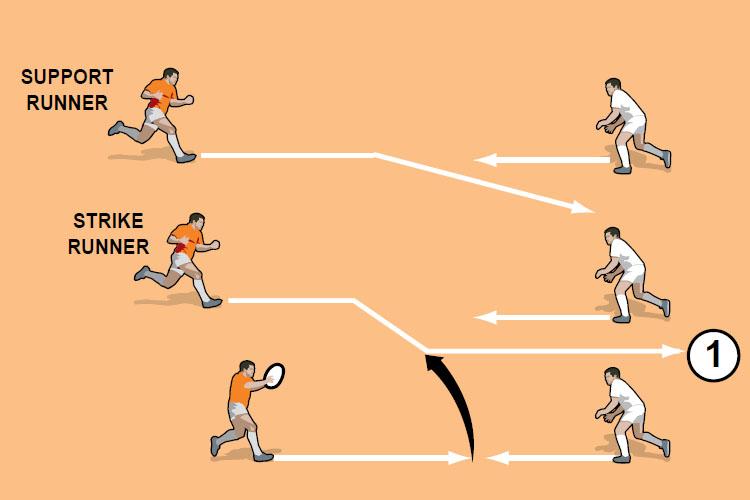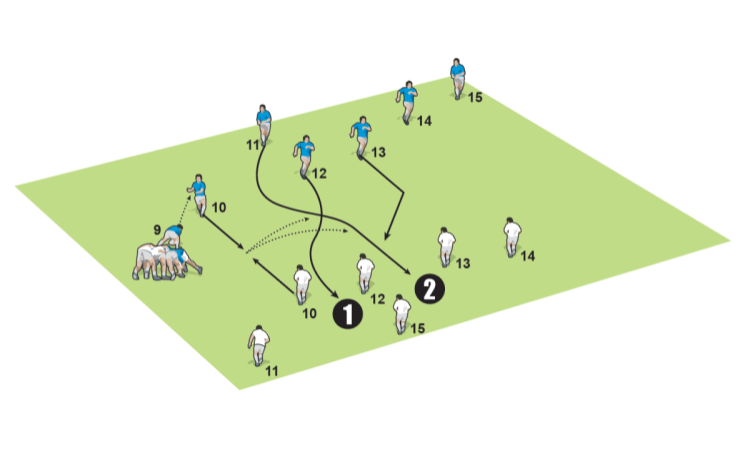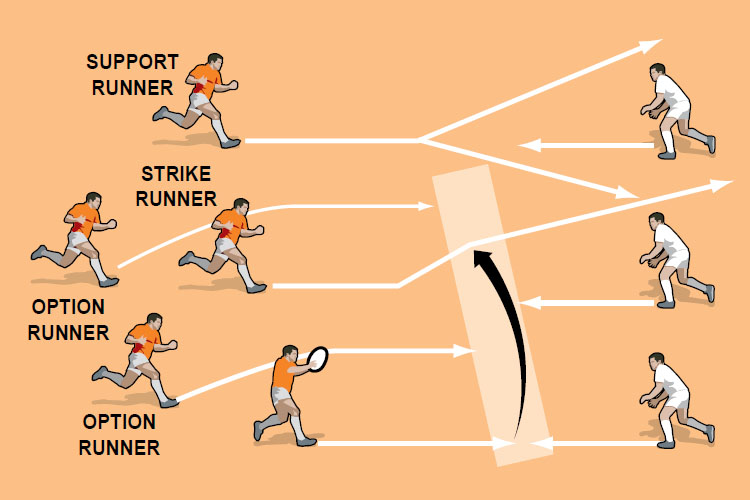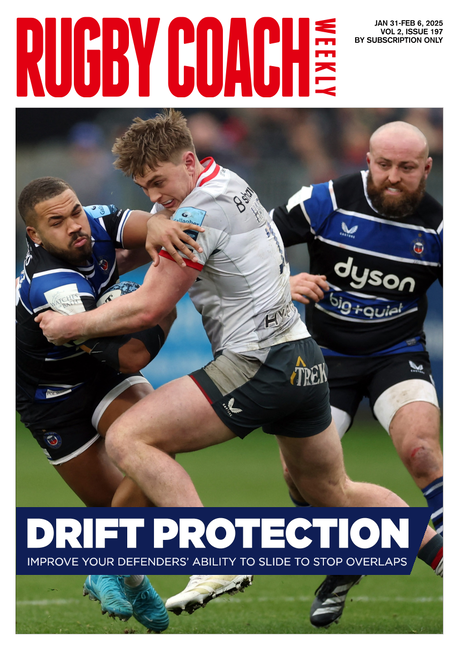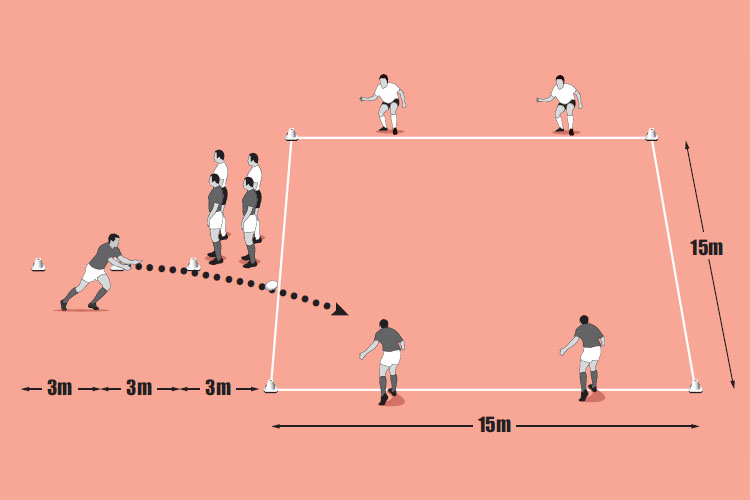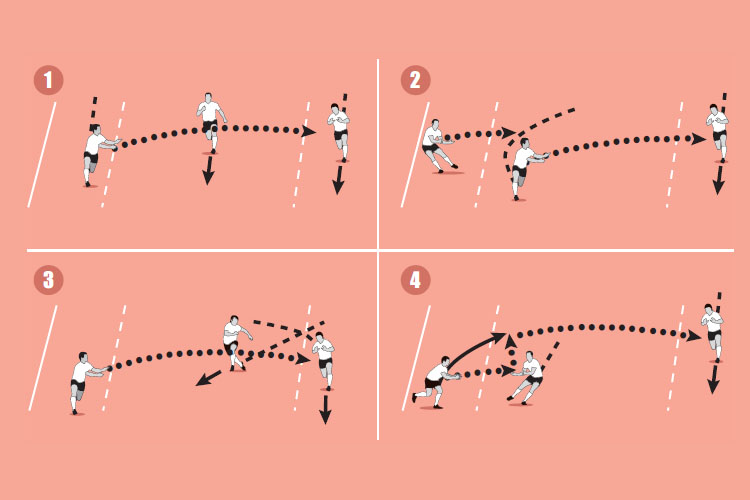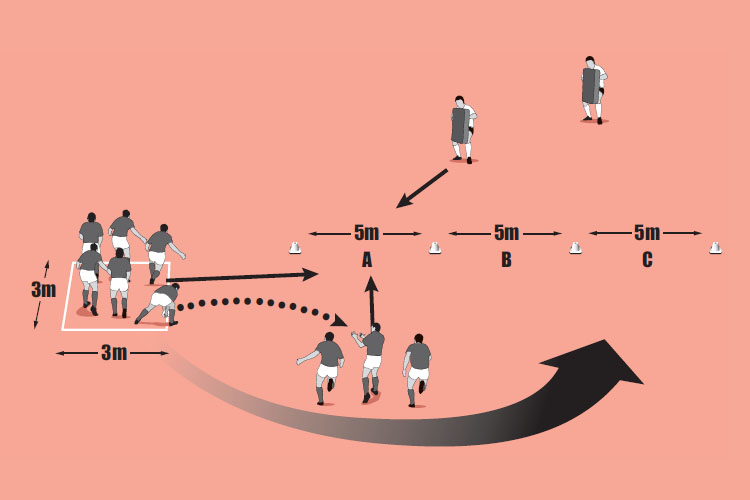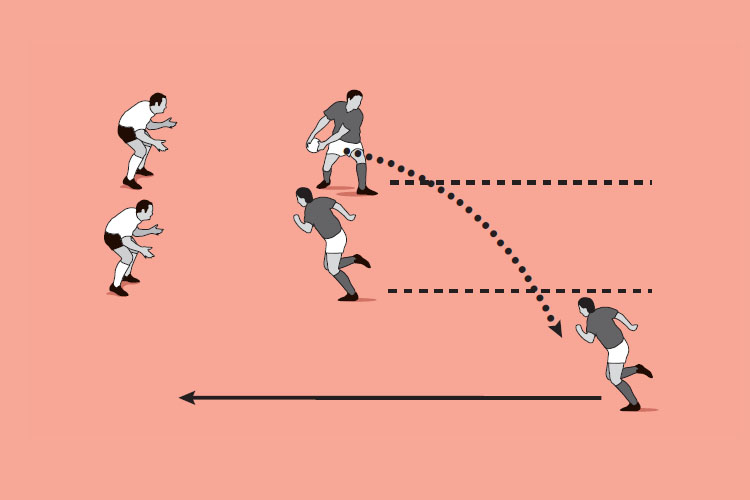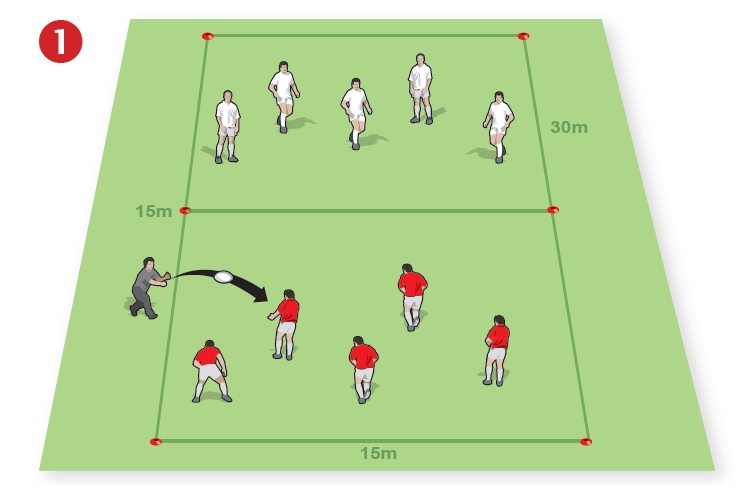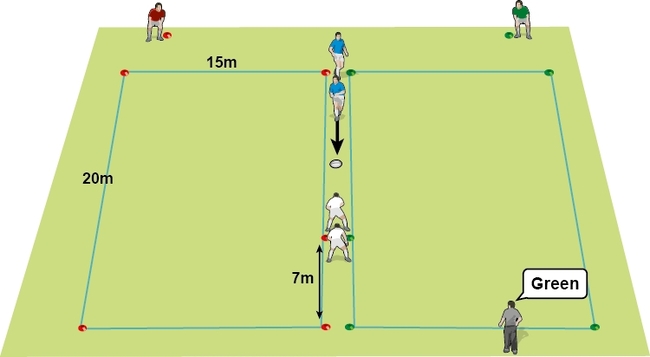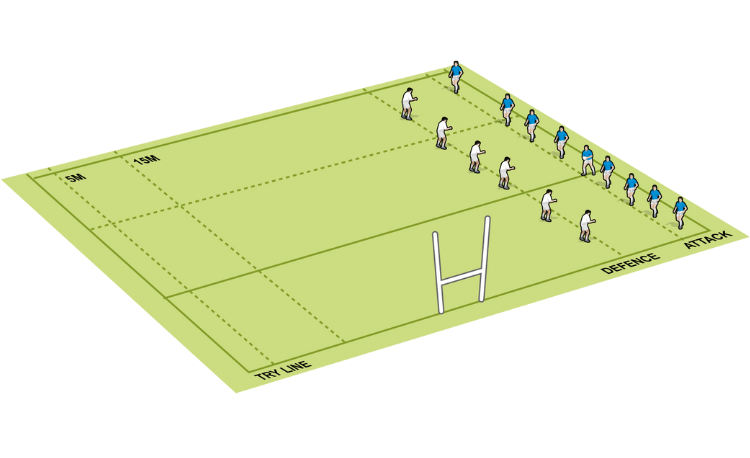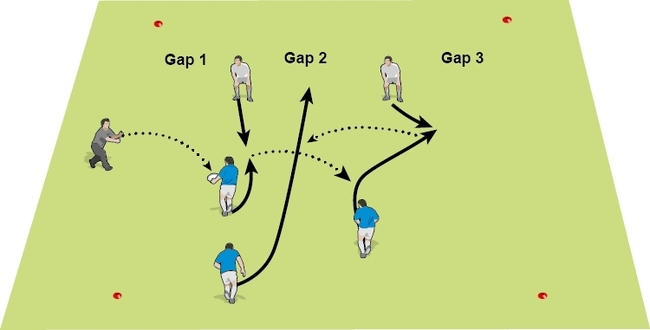Ins and outs
Running complex attack patterns to break the tackle line often doesn’t succeed. The same outcome can be achieved by the late movement of a strike runner into space and a well delivered pass. Running lines known as “ins” and “outs” can be used at any level of the game and, if well executed, will lead to more clean breaks.
Warm up time: 7-10
Session time: 8-10
Development time: 8-10
Game time: 15-20
Warm down time: 7-10
What to think about
To improve the success rate of breaking the tackle line, it is important to have two or three option runners in each move. They distract the defence from the real purpose of the attack and allow your playmaker to adjust the move if he sees the defence change. Encourage your players to work hard off the ball to create realistic options for the playmaker, and open space for the strike runners. The option runners are not just decoys. They must be in a position to receive a pass at the same time as the other options. They also need to arrive from depth, at pace and make plenty of noise.set-up
- Run straight at your opposite man to fix him.
- Change direction sharply before receiving the ball and attack the space.
- Deliver accurate passes in front of the strike runner.
What you get your players to do
Set up three attacking players opposite three defenders. Walk through the ins and outs. Have a ball carrier attack his defender and fix him. For an “in” ball, a strike runner runs straight at the defender, then changes direction and accelerates at space 1 (see the top picture). He receives a short pop pass and straightens up into the space. For an “out” ball, the strike runner fixes the defender, then steps and accelerates into the space (2) on the outside, receiving a flat pass (see the middle picture).Development
Introduce the “in” ball and “out” ball in isolation, then let the players make their own decisions. Encourage them to hide their intended move until as late as possible. Play a game of 3 v 3 to see who can make the most clean breaks in a series of attacks.Related Files
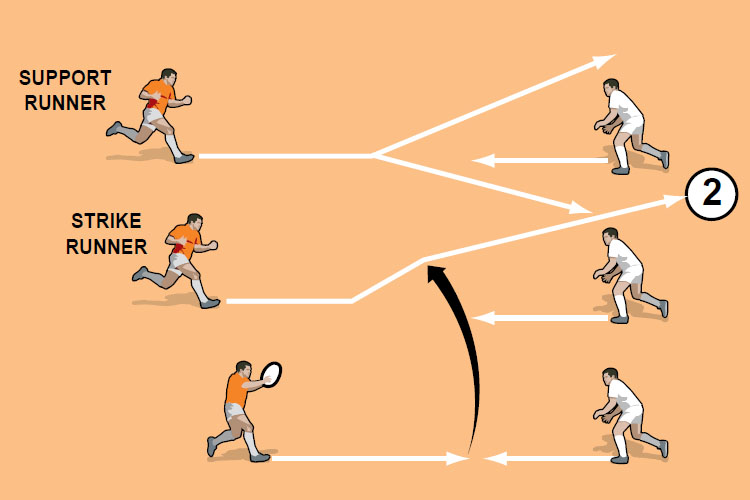
Game situation
Play a 5-a-side full contact game. The attacking team can only use “ins” and “outs” with option runners to break down the defence. If the strike runner makes a half break, he is allowed to offload the ball to a support runner. Once a tackle is made, the tackler must roll away and the attacking team retain possession. Let one team attack for two minutes, re-starting from the centre each time they score. Then challenge the other team to beat their score.What to call out
- “Call early – move late”
- “Put the pass into the space”
- “Accelerate onto the ball”
- “Support close to the strike runner”
Newsletter Sign Up
Coaches Testimonials

Gerald Kearney, Downtown Las Vegas Soccer Club

Paul Butler, Florida, USA

Rick Shields, Springboro, USA

Tony Green, Pierrefonds Titans, Quebec, Canada
Subscribe Today
Be a more effective, more successful rugby coach
In a recent survey 89% of subscribers said Rugby Coach Weekly makes them more confident, 91% said Rugby Coach Weekly makes them a more effective coach and 93% said Rugby Coach Weekly makes them more inspired.
Get Weekly Inspiration
All the latest techniques and approaches
Rugby Coach Weekly offers proven and easy to use rugby drills, coaching sessions, practice plans, small-sided games, warm-ups, training tips and advice.
We've been at the cutting edge of rugby coaching since we launched in 2005, creating resources for the grassroots youth coach, following best practice from around the world and insights from the professional game.
